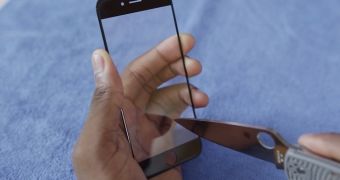When Apple had to take a decision on whether they go further with Gorilla Glass screens, they supposedly chose sapphire glass. As seen in the videos below, there's a very good reason for that.
We already have sapphire glass in our current iPhone 5s. That's right! Apple is using sapphire to cover the camera on the back of the phone and the Touch ID fingerprint scanner. The reason for that is that sapphire glass is scratch resistant and very clear.
Back in May 2013, Corning the company that makes Gorilla Glass was stating that Sapphire Glass has no chance to take over the smartphone market.
"Sapphire's performance as a cover for high-end watches probably leads to the current speculation. But those covers are much smaller than a mobile phone and are two to three times thicker than Gorilla Glass. In one of our commonly accepted strength tests, sapphire breaks more easily than Gorilla Glass after the same simulated use. Additionally, sapphire’s cost and environmental hit are huge issues", said James R. Steiner, Senior vice president and general manager of Corning's Specialty Materials segment.
Steiner was right, but Apple will probably take a different road this fall with the launch of iPhone 6. If the leaks are true, we will see a virtually indestructible iPhone screen.
A Sapphire glass display will no longer need a scratch resistant cover because the screen itself cannot be scratched in real world usage scenarios.
And if that is not enough, Apple has their own sapphire glass plant in Arizona so they do not need to worry about buying the parts from a 3rd party manufacturer. The glass is made on american soil and then shipped to China to be added to the body of the iPhone.
One other advantage Apple has over the rest of the smartphone makers is that the californian tech giant can produce its own glass at an overwhelming lower cost than the rest of the market. Now even if Apple will not be using this material as an iPhone display, having it incorporated in cameras, Touch ID sensors and iWatch displays can give a financial advantage to them.
Now going back to the Leak part video, Marques Brownlee got his hands on a shiny iPhone 6 display. The stress test is pretty rough and you can see for yourself why Apple chose sapphire glass over Corning Gorilla Glass. Also, the second video shows a similar stress test performed on an iPhone 5s with a Gorilla Glass Display.

 14 DAY TRIAL //
14 DAY TRIAL // 
